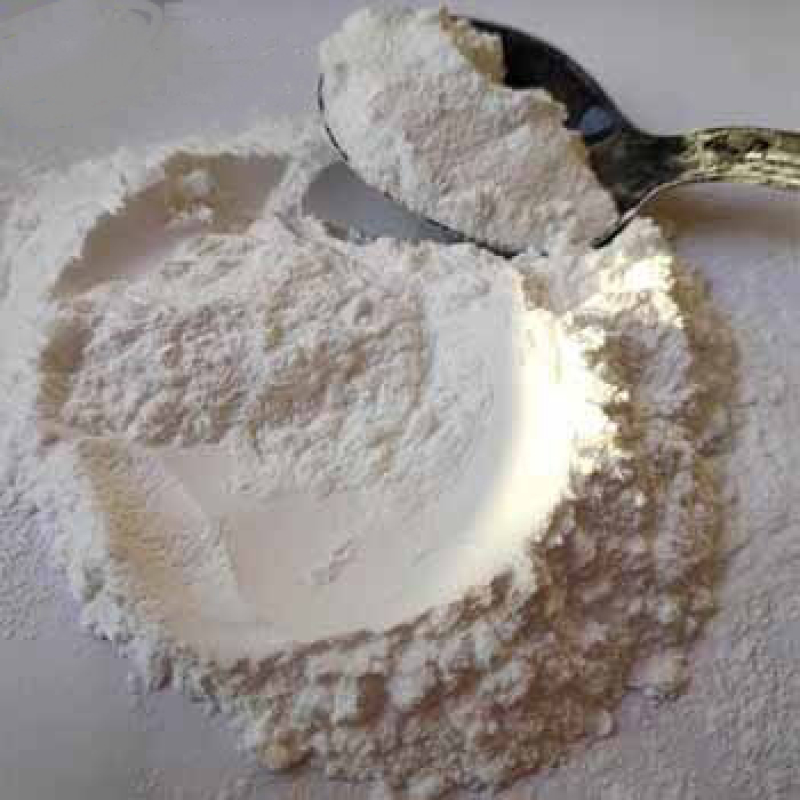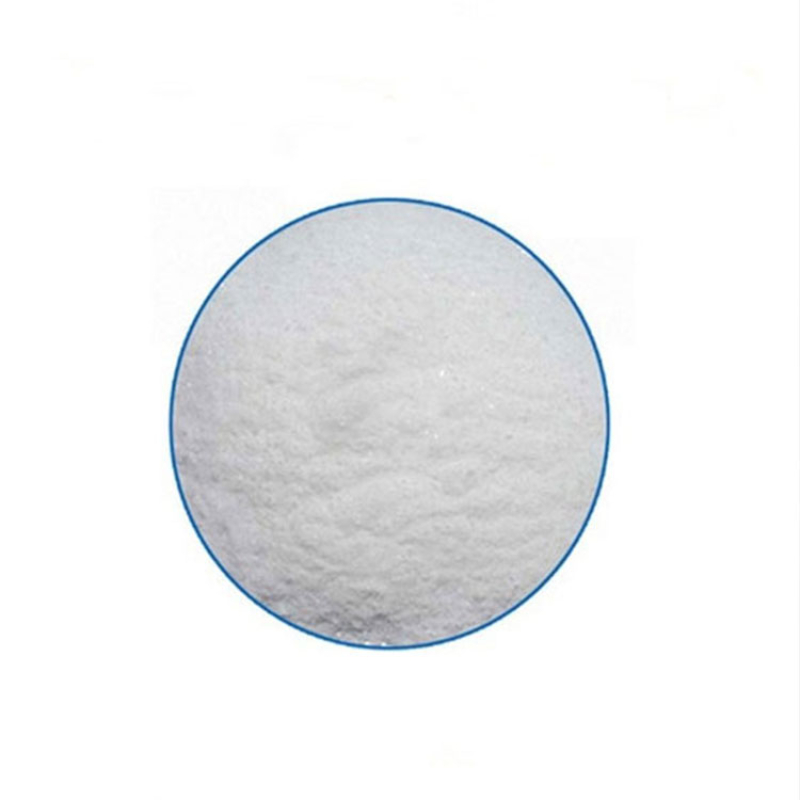Ethyl acetate CAS# 141-78-6Chemical Properties:Ethyl acetate (structure shown above) is the most familiar ester to many chemistry students and possibly the ester with the widest range of uses. Esters are structurally derived from carboxylic acids by replacing the acidic hydrogen by an alkyl or aryl group. Ethyl acetate itself is a colourless liquid at room temperature with a pleasant "fruity" smell, b.p.
Contact Now
Products Description of Silver acetate CAS#563-63-3Silver acetate is an off-white solid powder at room temperature and pressure. It has average solubility in water. 1L of water can dissolve about 10.2g of silver acetate. It has good solubility in organic solvents such as ethanol, methanol and acetone.
Contact Now
Products Description of Tris(hydroxymethyl)nitromethane CAS#126-11-4Chemical, crystallizes into white crystals in a mixture of ethyl acetate and benzene.
Contact Now
CELLULOSE ACETATE BUTYRATE CAS#9004-36-8Cellulose acetate butyrate has a wider solubility range.
Contact Now
Products Description of NICARBAZINE CAS#330-95-0Nicarbazin is a complex of dinitrocarbamide and hydroxydimethylpyrimidine. It is a yellow or yellow-green powder; odorless, with a slight odor. This product is slightly soluble in dimethylformamide, insoluble in water, ethanol, ethyl acetate, chloroform, and ether.
Contact Now
Products Description of Magnesium Acetate Tetrahydrate CAS#16674-78-5Colorless crystals, easily deliquescent.
Contact Now
Products Description of Zirconium acetate CAS#7585-20-8Zirconium acetate (liquid), a colorless transparent liquid, is made by the reaction of zirconium oxychloride and sodium carbonate.
Contact Now
Products Description of Lead acetate trihydrate CAS#6080-56-4 Lead acetate trihydrate is colorless crystal, white granule or powder, which is deliquescent. It is easily soluble in water and has a sweet taste.
Contact Now
Products Description of Ethyl butylacetylaminopropionate CAS#52304-36-6Mosquito repellent, also known as ethyl butyl acetylaminopropionate, BAAPE, IR3535, and Imonin, is a plasticizer and a broad-spectrum, highly effective, low-toxic insect repellent.Ethyl butylacetylaminopropionate Chemical PropertiesMelting point <-20°Boiling point bp0.2 108-110°; bp0.5 126-127°density 0.987±0.06 g/cm3(Predicted)refractive index nD20 1.452-1.455Fp 318°F (159°C)storage temp. Sealed in dry,Room Temperaturesolubility Acetonitrile (Slightly), Chloroform (Slightly), Ethy
Contact Now
Products Description of Nicarbazin CAS#330-95-0Nicarbazine is a complex of dinitrodiphenylurea and hydroxydimethylpyrimidine. It is a yellow or yellow-green powder; odorless, with a slight peculiar smell. This product is slightly soluble in dimethylformamide and insoluble in water, ethanol, ethyl acetate, chloroform and ether.
Contact Now
Products Description of Cobalt Acetate CAS#71-48-7Cobalt acetate is a purple-red crystal that is easily deliquescent and is soluble in water, acid and ethanol.Cobalt acetate Chemical PropertiesMelting point 298 °C (dec.)(lit.)density 1.7043g/cm3solubility Aqueous Acid (Slightly), Water (Slightly)form Powdercolor Pale pink to purpleWater Solubility Soluble in water, alcohol, dilute acids and pentyl acetate(tetrahydrate).Sensitive HygroscopicMerck 14,2433Stability:HygroscopicInChIKeyQAHREYKOYSIQPH-UHFFFAOYSA-LLogP-0.285 (est)CAS DataBase Referenc
Contact Now
Products Description of Iminodibenzyl CAS#494-19-9Iminodibenzyl is a chemical substance with the molecular formula C14H13N.Iminodibenzyl Chemical PropertiesMelting point 105-108 °C (lit.)Boiling point 321.94°C (rough estimate)density 1.0778 (rough estimate)refractive index 1.6353 (estimate)storage temp. Keep in dark place,Sealed in dry,Room Temperaturesolubility Chloroform (Slightly), Ethyl Acetate (Slightly, Heated), Methanol (Slightly)form Crystalline Powderpka0.83±0.20(Predicted)color Yellow to beigeBRN 152732LogP4.27CAS DataBase Reference49
Contact Now
Products Description of BISMUTH SULFIDECAS#1345-07-9Bismuth sulfide is brown-yellow powder or crystal, with a specific gravity of 7.39. It decomposes at 685℃. It is insoluble in water and ethyl acetate, but soluble in nitric acid and hydrochloric acid.BISMUTH SULFIDE Chemical PropertiesMelting point 685°C (dec.)density 7.7 g/mL at 25 °C(lit.)solubility insoluble in H2O; soluble in acid solutionsform LumpSpecific Gravity7.7color GrayWater Solubility Insoluble in water.
Contact Now
Products Description of 2-Ethyl anthraquinoneCAS#84-51-5Pale yellow solid, melting point lower than anthraquinone, soluble in benzene, can be recrystallized from ethanol or acetic acid, melting point 108℃.2-Ethyl anthraquinone Chemical PropertiesMelting point 108-111 °C (lit.)Boiling point 180-190°Cdensity 1.27 g/cm3 (21℃)vapor pressure <1 hPa (25 °C)refractive index 1.6290 (estimate)Fp >210°Cstorage temp. Store below +30°C.solubility 0.00025g/lform powder to crystalcolor Light yellow to Amber to Dark greenWater Solubility Insol
Contact Now
Products Description of Polymethylene polyphenyl polyisocyanate CAS#9016-87-9Brown transparent liquid with pungent odor.Polymethylene polyphenyl polyisocyanate Chemical PropertiesBoiling point 392 °C5 mm Hgdensity 1.2 g/mL at 25 °C(lit.)vapor density 8.6 (vs air)refractive index n20/D 1.634Fp >230 °Fstorage temp. Refrigerator, Under inert atmospheresolubility DMSO (Sparingly), Ethyl Acetate (Slightly), Methanol (Soluble)form Oilcolor Yellow to OrangeStability:Stable.
Contact Now
Products Description of Potassium phosphate CAS#778-53-21-Ethyl-2-pyrrolidone is a transdermal absorption-enhancing compound and mechanism of its effect on multilammellar liposome of stratum corneum lipid has been studied.N-Ethyl-2-pyrrolidone is commonly used as a solvent. It has a low boiling point, which makes it suitable for use in low light and at constant pressure. It is also used as an intermediate in the preparation of polycarboxylic acid.
Contact Now
Products Description of Ethyl Chloroacetate CAS#105-39-5Ethyl chloroacetate is an organic compound, mainly used as a solvent and can also be used in organic synthesis.Ethyl chloroacetate Chemical PropertiesMelting point -26 °C (lit.)Boiling point 143 °C (lit.)density 1.145 g/mL at 25 °C (lit.)vapor density 4.23 (vs air)vapor pressure 10 mm Hg ( 38 °C)refractive index n20/D 1.421(lit.)Fp 150 °Fstorage temp. Store below +30°C.solubility 12.3g/lform Liquidcolor Clear colorlessOdorExtremely irritating; fruity; pungentexplosive l
Contact Now
Products Description of 2,2-Dimorpholinodiethylether CAS#6425-39-42,2-Dimorpholinyl diethyl ether is a transparent liquid.2,2-Dimorpholinodiethylether Chemical PropertiesMelting point -28 °CBoiling point 309 °C (lit.)density 1.06 g/mL at 25 °C (lit.)vapor pressure 66Pa at 20℃refractive index n20/D 1.484(lit.)Fp 295 °Fstorage temp. 2-8°Csolubility Chloroform (Slightly), Ethyl Acetate (Slightly)form Oilpka6.92±0.10(Predicted)color Pale Brown to Light BrownWater Solubility 100g/L at 20℃InChIKeyZMSQJSMSLXVTKN-UHFFFAOYSA-NLogP0.5
Contact Now
Products Description of Ethyl vinyl ether CAS#109-92-2Colorless flammable liquid with active chemical reaction performance. It is easy to polymerize in liquid or gas phase. Industrial products contain inhibitors to prevent polymerization. Freezing point -115℃, boiling point 35-36℃, melting point -115.8℃, relative density 0.754 (20/20℃), refractive index 1.3767, flash point -45.5℃, autoignition point 201.66℃, viscosity (20℃) 0.22mPa·s. Slightly soluble in water, only 0.9% (by weight).
Contact Now
Products Description of Polysorbate 20 CAS#9005-64-5Appearance: amber viscous liquid, with slight special odor, slightly bitter taste. Relative density is 1.08-1.13, boiling point is 321℃. Soluble in water, ethanol, methanol and ethyl acetate, insoluble in mineral oil and petroleum ether. HLB value is 16.7. Oral LD50 of rats is 37g/kg, Adl0-25mg/kg (FAO/WHO, 1994).
Contact Now
Products Description of 1-ETHOXY-2-PROPYL ACETATE CAS#54839-24-6Colorless liquid1-ETHOXY-2-PROPYL ACETATE Chemical PropertiesBoiling point 205.8°C (rough estimate)density 0.9410vapor pressure 2.02hPa at 24.85℃refractive index 1.4025solubility Chloroform (Slightly), Methanol (Slightly)form Oilcolor ColorlessWater Solubility 69.6g/L at 18℃LogP0.76 at 22℃EPA Substance Registry System2-Propanol, 1-ethoxy-, acetate (54839-24-6)Safety InformationRisk Statements 10Safety Statements 16RIDADR 1993HazardClass 3.2PackingGroup IIIFactor
Contact Now
Products Description of Ethyl 2-ethylacetoacetate CAS#607-97-6Used as an intermediate of the drug rebapidEthyl 2-ethylacetoacetate Chemical PropertiesMelting point 170 °C (decomp)Boiling point 87-189 °C/743 mmHg (lit.)density 0.981 g/mL at 25 °C (lit.)refractive index n20/D 1.421(lit.)Fp >230 °Fstorage temp. Keep in dark place,Sealed in dry,Room Temperaturesolubility Chloroform (Slightly), Methanol (Slightly)pka12.02±0.46(Predicted)form Liquidcolor Colorless to pale yellowOdorat 100.00 %.
Contact Now
Products Description of Ethyl 2-hydroxybenzoate 98% CAS#118-61-6Ethyl salicylate is a colorless oily liquid with a light wintergreen oil aroma. Boiling point is 234℃, melting point is 1.3℃. Soluble in ethanol, ether, acetic acid and most non-volatile oils, slightly soluble in water and glycerin. Used in organic synthesis or preparation of spices, and also used as solvent. The production method is obtained by esterification of o-hydroxybenzoic acid (i.e.
Contact Now
Propyl acetate CAS# 109-60-4Chemical Properties:Propyl acetate, also known as propyl acetate, n-propyl acetate, or n-propyl acetate, is a colorless and clear liquid with a soft fruity aroma. Naturally found in strawberries, bananas, and tomatoes. Soluble in most organic solvents such as alcohols, ketones, esters, and oils, and slightly soluble in water.Quality Assurance:We maintain strict quality control to ensure our glacial acetic acid meets the highest purity standards, essential for critical industrial applications.Professional Sales Pitch:As a sales professional, I understand th
Contact Now


































